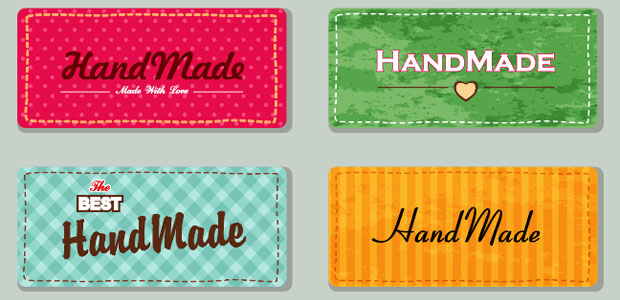Crafting an Online Strategy, Part 1: Which Wares Should You Sell?
You’re making soap or jewelry or handcrafted leather bags, and you want to sell them online. Where do you go? What spaces work best? How do you decide where to sell your wares?
It’s important to choose the right selling spaces for your products and business strategy. That can include selling on both your own site and at least one other platform.
Selling on your own site gives you control over how your products are represented, and you avoid the fees and rules of third-party sites. On the other hand, third-party sites offer the benefits of an established network of customers, tech help and marketing assistance.
The trick is to find the combination of sites that makes the most sense for you and does the best job of getting your creations into the hands of customers.
Etsy World
Etsy, one of the first and most popular sites for makers, crafters and designers, does much to help its sellers find success.
“Etsy helps creative business owners start, responsibly scale and enjoy their businesses on their own terms,” said Kimm Alfonso, director of seller development for Etsy.
“There is room on Etsy for makers and creative entrepreneurs of all scales and sizes,” she told the E-Commerce Times.
The key to using Etsy effectively is to draw on all the services it offers. After all, as a business owner, you’re paying fees to Etsy that cover these services, so it makes sense to use them.
“Once you get on to Etsy, the primary way to succeed is to get your item in front of buyers by leveraging the tools on the platform like titles, tags and your overall listing to really stand out,” said Alfonso.
“Your shop will always be a work in progress,” and Etsy provides tips and education to help you grow your business, she added.
Being successful on the Etsy depends on making use of what the site has to offer, while being aware of its limitations, according to Nancy Kanter, who ownsSparkling Vine Design and sells her wine-inspired, handcrafted jewelry on Etsy.

“The benefits of Etsy are having a built-in audience looking for handcrafted goods, and it’s relatively easy to set up shop and be ready to sell,” she told the E-Commerce Times. “The downsides are paying fees on each listing and sale in addition to merchant fees, like PayPal, and being at the mercy of another company’s business decisions that could impact your business.”
Branching Out
Etsy isn’t the only e-commerce game in town for makers. In addition to Amazon, there are also smaller and more niche sites for crafters, such asOpenSky andHandmadeArtists.com.
“The mission of HandmadeArtists.com is to provide a safe place for handmade artists and crafters to show and sell their handmade treasures,” co-owner Kimberly Kitchen said.
“Because so many of the other venues are saturated with mass-market, vintage and commercial supplies, the handmade artist tends to get lost in the shuffle. By creating a purely handmade marketplace and showcase, we hope to be able to help these creative individuals get the exposure that they and their work so deserve,” she told the E-Commerce Times.
While not as large as Etsy or Amazon, sites like HandmadeArtists offer a specialized audience and intimate atmosphere that other sites might not.
“What sets HandmadeArtists.com apart is that we are a small community of crafters — much like the Etsy mission in the beginning — who support each other and promote each other,” Kitchen said. “Rather than getting lost in a search which yields a million results, many of which have nothing to do with your original search, a customer can be assured that they will only find handmade goods made by the individual artists.”
Your Own Space
In addition to selling on one or more third-party platforms, crafters should consider selling on their own sites as well.
On your own site, you have “more control over the look and feel of the brand, … more control over customer experience,” and access to customer data, Krit Khandelwal, CEO ofSoothi, told the E-Commerce Times. Soothi sells its eco-friendly handmade accessories on several third-party platforms as well as its own site.

Having your own site — even with the investment of time, money and effort it requires — is beneficial, Sparkling Vine Design’s Kanter said.
“I would recommend having an Etsy page,” she said, “but also having your own website so you’re not beholden to anyone.”
Crafting an Online Strategy, Part 3: How to Get Paid for Your Wares























































Social Media
See all Social Media